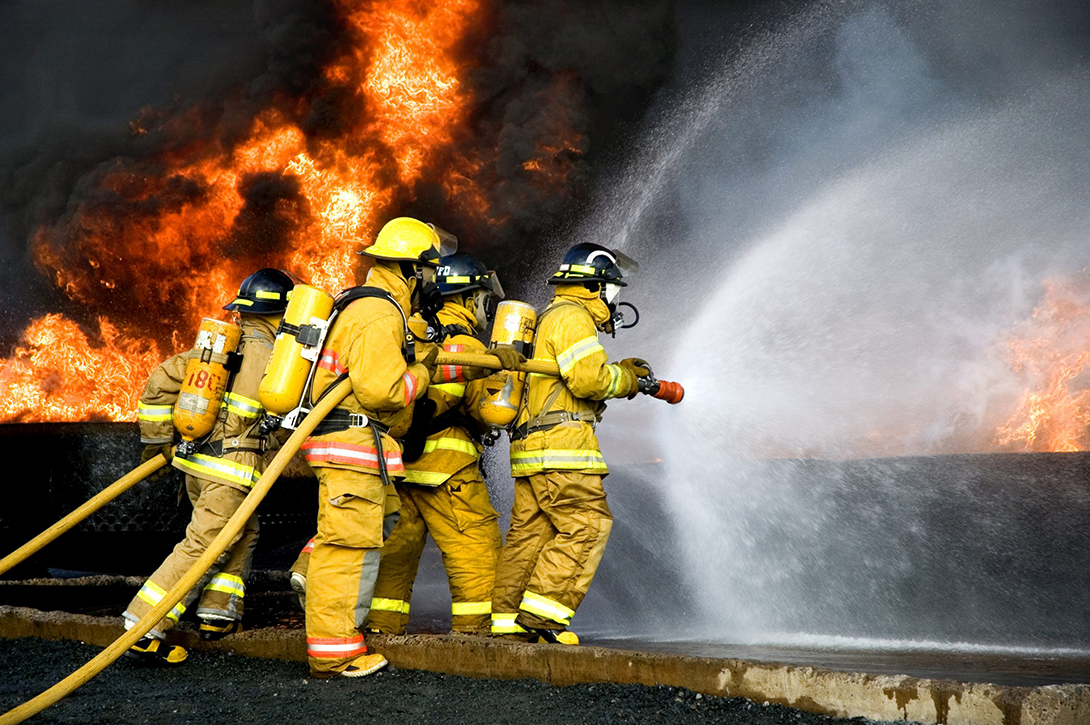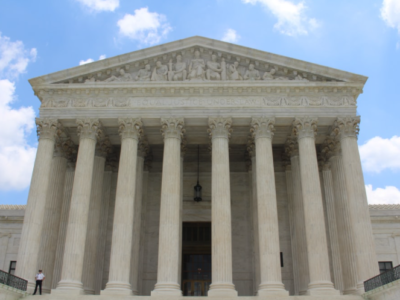Like other first responders, firefighters put their lives in jeopardy every time they go to work. The environments and circumstances in which they find themselves could cause them harm at any time. Even though the fatality and injury numbers for 2017 were the lowest since the National Fire Protection Association (NFPA) began keeping tabs on these statistics, 60 firefighters lost their lives, and 58,835 suffered a variety of injuries as reported by participating public fire departments.
Around 42 percent of the injuries occurred at actual fires to structures, vehicles, and other locations. Approximately 28 percent occurred during responses to non-fires. Data shows that 4,555 men and women in this profession suffered injuries either on the way to or from a call. Even training can be dangerous for firefighters, as evidenced by the fact that 8,380 suffered injuries during that time. The remaining injuries occurred during other work-related activities.
What Types of Injuries Occurred During Fires?
When breaking down the data, the NFPA discovered that the following injuries occur most frequently at fires: gas or smoke inhalation, cuts, bruises and bleeding, heat exhaustion, frostbite, muscular pain, sprains and strains, exposure to fire products, and falls, slips, or jumps. These figures highlight the unique risks of firefighting, where the danger extends beyond flames to include hidden hazards.
Firefighters could also suffer injuries or illnesses from exposure to toxic substances. They have no way of knowing when they enter a scene what they might encounter. Ordinary objects could give off toxic fumes and debris when they burn, which would not be a danger otherwise. For example, plastics, household chemicals, or industrial solvents can release carcinogenic gases when ignited, exposing firefighters to long-term risks such as cancer and chronic respiratory disease.
It probably doesn’t come as a surprise that larger departments see more injuries during fires than smaller departments. Many of the larger departments respond to fires 572 times more often than smaller departments do. This reflects the sheer volume of calls that urban fire departments handle compared to those of rural or volunteer agencies.
Vehicle Accidents Involving Fire Fighters
Many people forget that firefighters also end up in motor vehicle accidents. In fact, 10 of those who died in 2017 were struck while outside a vehicle. This number is particularly alarming because the average for each of the 30 previous years was only four. Eight others died in collisions.
Even though vehicle collisions represent a small portion of the injuries and deaths each year, for the people and families involved, the numbers remain significant. These accidents may occur when responding to calls under emergency conditions, where the increased speed and urgency heighten the likelihood of collisions. They may also occur when fire trucks are parked at accident scenes and firefighters are on foot, placing them at risk of being struck by passing vehicles.
California Workers’ Compensation for Injured Firefighters
California firefighters who suffer injuries while on duty, or the families of those who lose their lives, may find financial support during recovery or after death through workers’ compensation claims. Under California labor laws and workers’ compensation statutes, firefighters are eligible for several benefits, including:
- Medical treatment coverage for immediate and ongoing care
- Temporary disability benefits for time away from work
- Permanent disability benefits for long-term or career-ending injuries
- Death benefits for families of firefighters who lose their lives in the line of duty
- Vocational rehabilitation is required if the injury prevents a return to active firefighting
California has some of the strongest protections for firefighters in the nation. Specific statutes, such as California Labor Code § 3212, provide presumptions that certain injuries and illnesses are work-related. This means firefighters do not always have to prove the direct link between their job and their condition, giving them an important advantage in accessing benefits.
Presumptive Coverage for Firefighters in California
California law provides presumptive coverage for a range of illnesses affecting firefighters. These presumptions are critical because they shift the burden of proof away from injured firefighters. The law presumes the following conditions to be job-related unless proven otherwise:
- Cancer caused by exposure to carcinogens
- Heart disease and hypertension are linked to occupational stress
- Respiratory illnesses from toxic smoke inhalation
- Certain infectious diseases contracted in the line of duty
- Post-Traumatic Stress Disorder (PTSD) is associated with repeated exposure to traumatic events
This presumptive protection recognizes the realities of firefighting. For example, when a firefighter develops lung cancer years after service, the law acknowledges that exposure to smoke, toxic fumes, and hazardous environments is a likely cause. Similarly, PTSD is increasingly recognized as an occupational hazard due to the frequency of exposure to life-threatening situations and fatalities.
Filing a Workers’ Compensation Claim in California
Despite these protections, the workers’ compensation process can still be complex. To initiate a claim, injured firefighters must notify their employer of the injury within 30 days of the incident. The employer then provides a claim form (DWC-1), which must be completed and submitted to begin the benefits process. From there, the employer and its insurer investigate the claim to determine eligibility.
If benefits are denied, firefighters or their families have the right to appeal before the California Workers’ Compensation Appeals Board (WCAB). Appeals often require medical evidence, expert testimony, and legal advocacy to succeed. Missing deadlines or submitting incomplete documentation can result in delays or denials, which is why legal support is often necessary.
OSHA, NFPA, and Safety Standards for Firefighters
The National Fire Protection Association sets occupational safety standards such as NFPA 1500, which establishes minimum requirements for firefighter health, wellness, and protective equipment. In California, Cal/OSHA enforces state-specific safety standards that govern respiratory protection, protective clothing, training, and exposure monitoring.
These standards are designed to minimize risks, but injuries and fatalities still occur due to the unpredictable nature of firefighting. Compliance with NFPA and OSHA standards is not only a safety issue but can also impact workers’ compensation claims. If equipment or safety measures are inadequate, it may strengthen a firefighter’s case for benefits.
Families and Death Benefits
When firefighters lose their lives in the line of duty, surviving spouses, children, or dependents may be entitled to death benefits. These benefits include weekly payments up to statutory limits and coverage for funeral expenses. Families must typically file claims within one year of the death, though presumptive illness cases may extend the timeline. For many families, these benefits provide crucial financial stability after a devastating loss.
Why Legal Help Matters
Firefighters dedicate their lives to protecting others, and when they are injured, they deserve full support and compensation. However, the system is not always straightforward. Disputes over medical causation, delays in approval, and appeals can create unnecessary burdens on firefighters and their families. Having a knowledgeable law firm like Hussain & Gutierrez can make the difference between a denied claim and receiving the full range of available benefits. Our legal team is well-versed in California workers’ compensation laws, firefighter presumptive illness coverage, and the appeals process.
FAQs
Does workers’ compensation in California cover all firefighter injuries?
Yes. Whether injuries occur during active firefighting, training, vehicle accidents, or other work-related duties, they are generally covered.
What presumptive illnesses qualify firefighters for benefits?
California law recognizes cancer, respiratory illness, heart disease, hypertension, certain infectious diseases, and PTSD as presumptive conditions.
How long do families have to file a death claim?
Surviving spouses, children, or dependents typically have one year from the date of death to file for death benefits, though presumptive illness cases may extend deadlines.
Does workers’ compensation cover long-term exposure to smoke or toxic chemicals?
Yes. Chronic illnesses resulting from occupational exposure are compensable, provided that documentation and medical evidence are submitted.
Do volunteer firefighters in California qualify for workers’ compensation?
Yes, many volunteer firefighters are covered under municipal or county workers’ compensation programs, although coverage may vary by jurisdiction.
What happens if a workers’ comp claim is denied?
If denied, firefighters or their families can appeal before the Workers’ Compensation Appeals Board. Legal representation is often crucial for navigating this process successfully.
Protect Your Rights with Hussain & Gutierrez
If you or a loved one is a firefighter injured in the line of duty, do not navigate the workers’ compensation system alone. At Hussain & Gutierrez, we fight to ensure firefighters and their families receive the full medical and financial benefits they deserve.
Contact us today to schedule a consultation and get the support you need.



